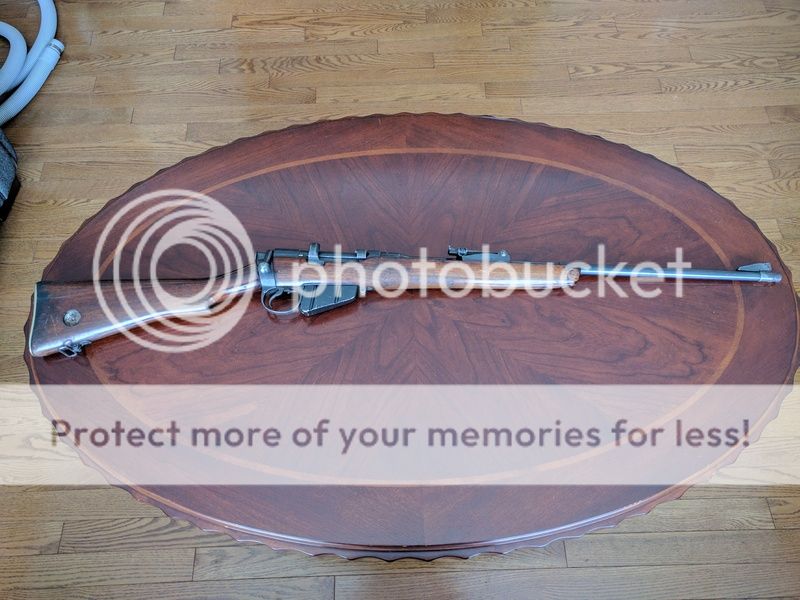Hi guys. I just acquired a 1915 No1 MkIII* and I'm kinda overwhelmed with trying to determine what I have and what I should do with it. First things first, here are pics of all the markings I could find on it.











So to begin, what are the important things I should know about this gun? Is it a parts gun, or is it all or mostly original? The stock has been sporterized, and I think I would like to find a complete stock and restore it to its original configuration if it's worth it. What if anything should I be doing to restore or preserve the metal? I do plan on shooting this gun, so how do I go about making sure it is safe to shoot? The seller said it shoots very well, and I believe him to be a trustworthy guy.











So to begin, what are the important things I should know about this gun? Is it a parts gun, or is it all or mostly original? The stock has been sporterized, and I think I would like to find a complete stock and restore it to its original configuration if it's worth it. What if anything should I be doing to restore or preserve the metal? I do plan on shooting this gun, so how do I go about making sure it is safe to shoot? The seller said it shoots very well, and I believe him to be a trustworthy guy.














































































